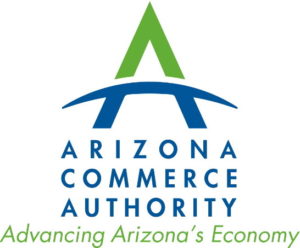Forbes Report: Why California’s Hottest Businesses Are Expanding To Arizona
 With Arizona Commerce Authority, Contributor
With Arizona Commerce Authority, Contributor
We who live here knew for a long time this day would come. Forbes reported recently that some of Caliornia’s hottest businesses are expanding to Arizona. When San Francisco-based Weebly was looking to open new offices last year, it wanted a location that would attract talent. The company, which has been offering user-friendly website-building tools since 2006, was valued at an estimated $455 million in 2014, after raising $35 million in Series C funding the previous year. It was time to make room for growth. Weebly’s challenge was to find affordable space that would remain satisfying to existing employees while enticing new ones.
The solution was Arizona.
Weebly CEO David Rusenko told the Arizona Republic he liked “the energy” around Arizona State University and in Scottsdale. “It was important that this office represent our larger mission, which is to inspire entrepreneurship. Scottsdale is a great opportunity to recruit passionate people who want to be part of something larger.”
Weebly signed a five-year lease on a 25,000-square-foot space in Scottsdale, and announced a plan to hire more than 250 people for sales, customer support and quality assurance, among other positions. Representing an estimated economic impact of $256 million, the investment also meant savings for the company, considering the lower cost of operating in Arizona than in California. Loopnet reports that the current median rent per square foot for office space in Scottsdale is $179; compared to $598 in San Francisco. Savings were passed along to relocating employees, too. The current median price of a single-family home in Scottsdale is $200,300, compared to $740,270 in the Bay Area.
Weebly’s choice was no surprise either toArizona Commerce Authority (ACA) President and CEO Sandra Watson. The ACA is engaged in an innovative campaign to leverage Arizona’s proximity to California’s robust economy, which is the eighth largest in the world. The ACA has opened offices in Santa Clara and Santa Monica, California to facilitate the expansion of California businesses into Arizona.
“We build bi-lateral business relationships between the two states,” Watson says, “to ensure that California companies are aware of Arizona’s business-friendly environment as they’re considering locations in which to scale their operations.”
One of Arizona’s key advantages is its close proximity to California. Executives can easily commute between the two locations. It’s such an easy trip by plane that an executive based in San Francisco can put in a day’s work in Phoenix and make it home in time for dinner.
Another plus point is Arizona’s pro-business climate. In 2011, the framework for the ACA was created with the groundbreaking, (shown here from TREO) Arizona Competitiveness Package. This lowered taxes, eased regulations and put in place incentives such as the Arizona Innovation Challenge, which awards $250,000 grants — $3 million annually—to tech entrepreneurs.
Other highlights are the Arizona Innovation Accelerator Fund, an $18.2 million loan participation program that stimulates financing of small businesses and manufacturers; the AZ Fast Grant, aimed at assisting innovators with commercialization; the Angel Investment Tax Credit Program, which provides tax credits to investors making capital investments in qualified small businesses; and what’s affectionately known as the AZ Step Grant, Arizona’s State Trade and Export Promotion Program, which helps small businesses enter export markets or expand into new markets.
Seeking business growth that will add value in both states, the ACA focuses on attracting California business in industries that already have a strong presence in Arizona. These include science and tech; bioscience and healthcare; aerospace and defense; optics and photonics; and renewable energy.
“Our California offices serve as an in-market resource for Arizona companies looking to explore opportunities with California companies by identifying additional customers and strengthening supply chain opportunities,” Watson explains.
The effort is paying off. In 2014, Chief Executive Magazine ranked Arizona one of the top ten places to do business in the nation. On the ground in Arizona, there’s ample evidence this accolade is well deserved. In recent months, Apple has opened its Global Command Center in Mesa—at $2 billion, the investment is one of the largest in the company’s history. The iPad point-of-sale platform Revel Systems has committed to adding 160 jobs to the Scottsdale economy. Maxwell Technologies has begun manufacturing its ultracapacitor-based energy storage products in Arizona. HR technology company Zenefits opened a Scottsdale office in November, creating 1,300 jobs.
Perhaps most symbolically, Silicon Valley Bank (SVB) has arrived on the scene. SVB’s new IT and operations have drummed up 235 jobs for Tempe. The bank has committed to lending $100 million in investment capital to Arizona’s high-growth technology companies over five years.
More than 24 percent of projects in ACA’s business pipeline originate in California, representing $21.15 billion in capital investment. When Weebly moved in, VP of Customer Success Alan Chambless told the Phoenix Business Journal the company is in business to “help people become successful.” It makes sense, then, that Weebly would expand into the entrepreneurial ecosystem of Arizona, where the corporate culture seems uniquely primed to forge a workforce that’s effective and satisfied. “We’ll be in constant growth mode,” promised Chambless.
The same could be said of Arizona.
To read the full article Click HERE.